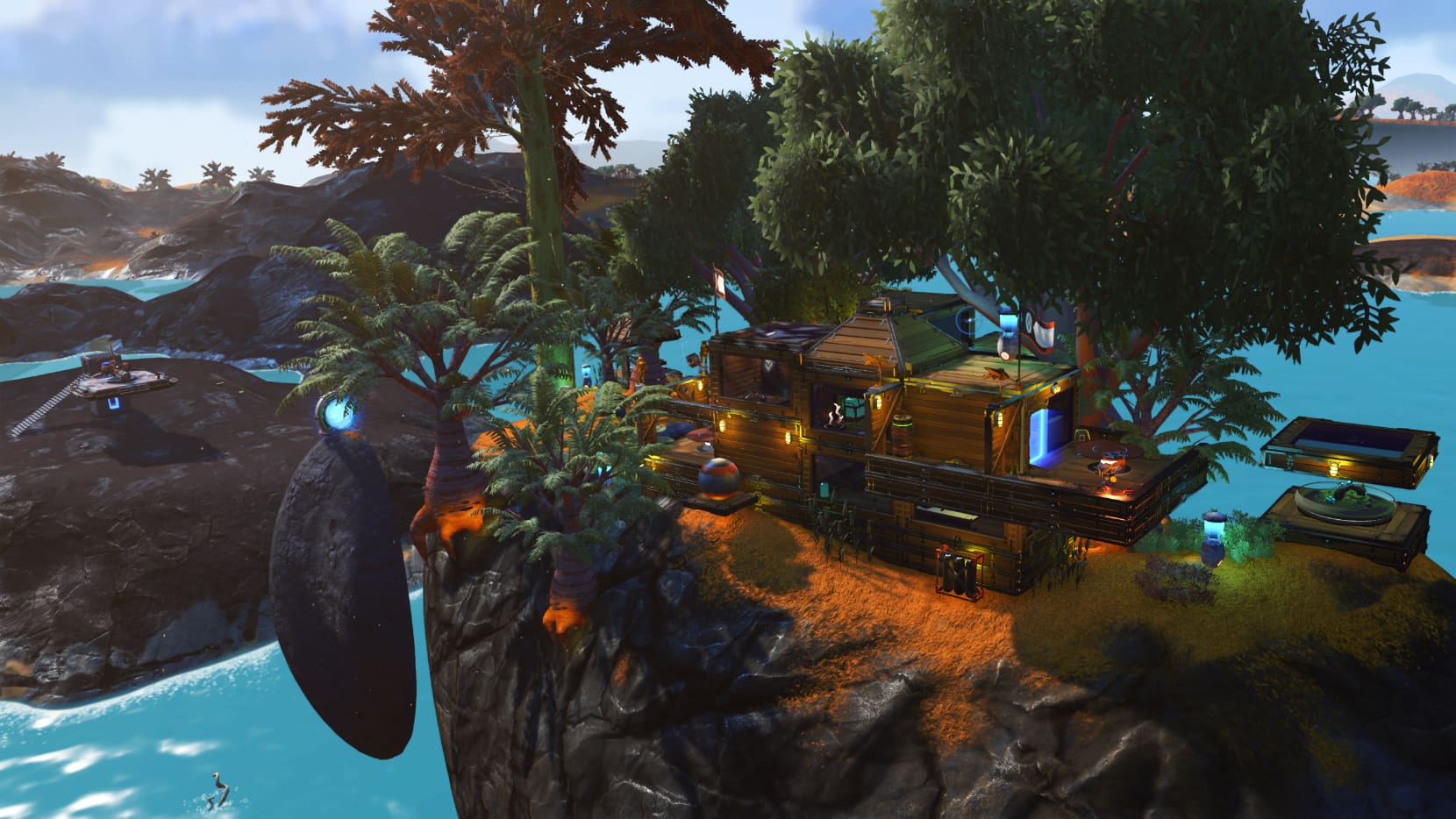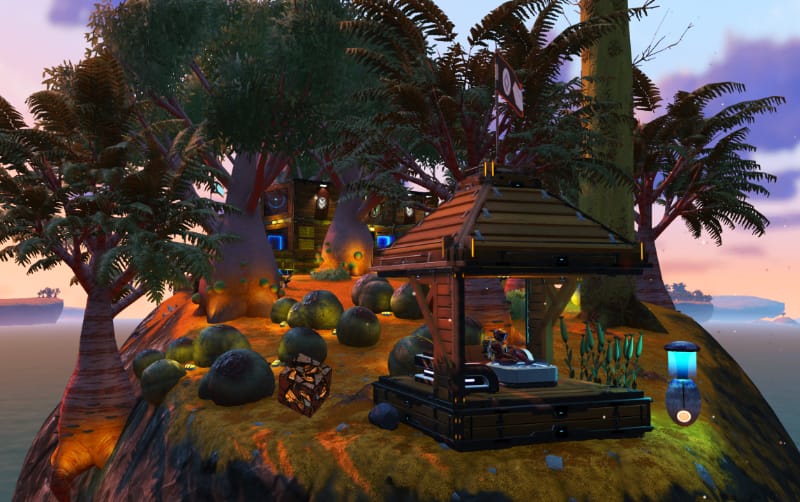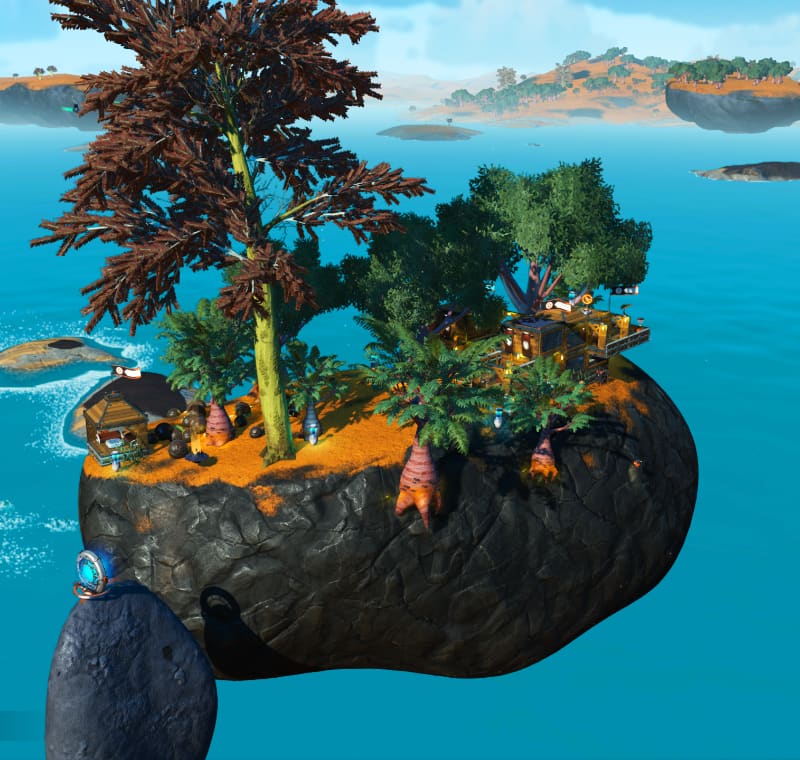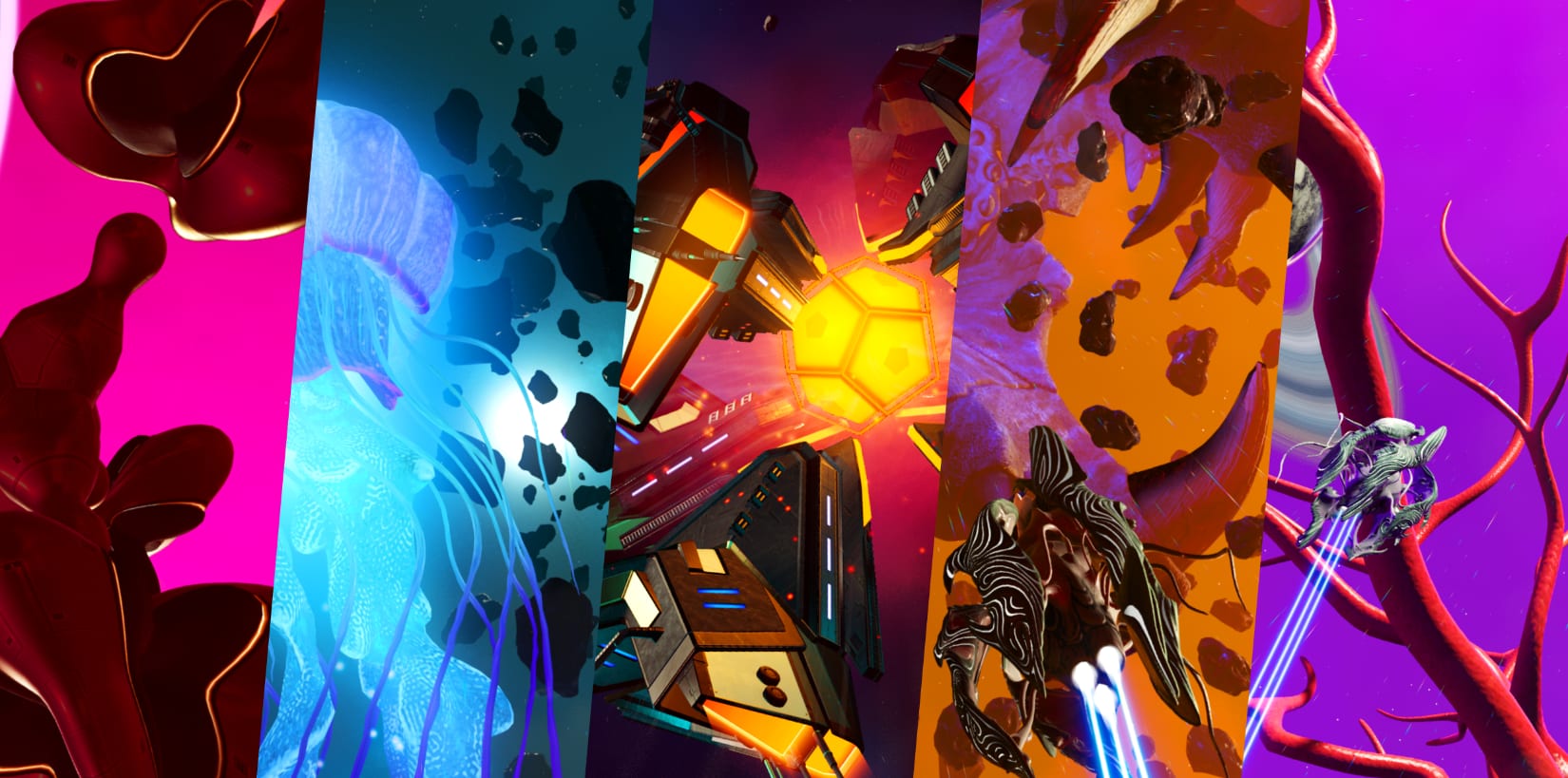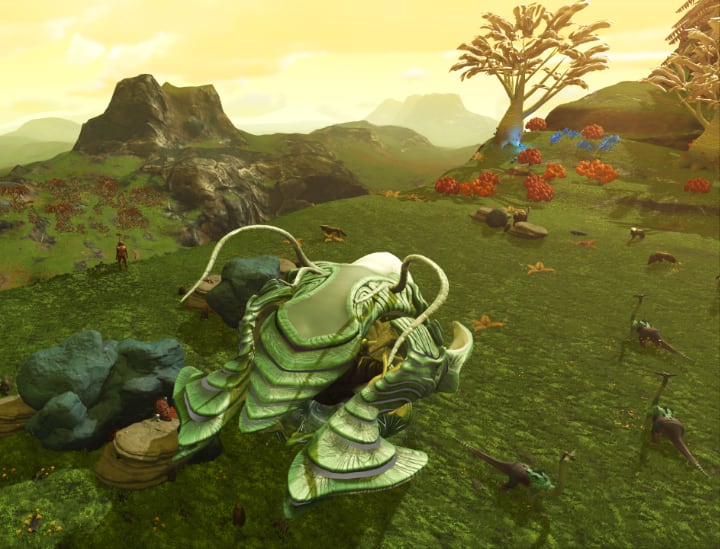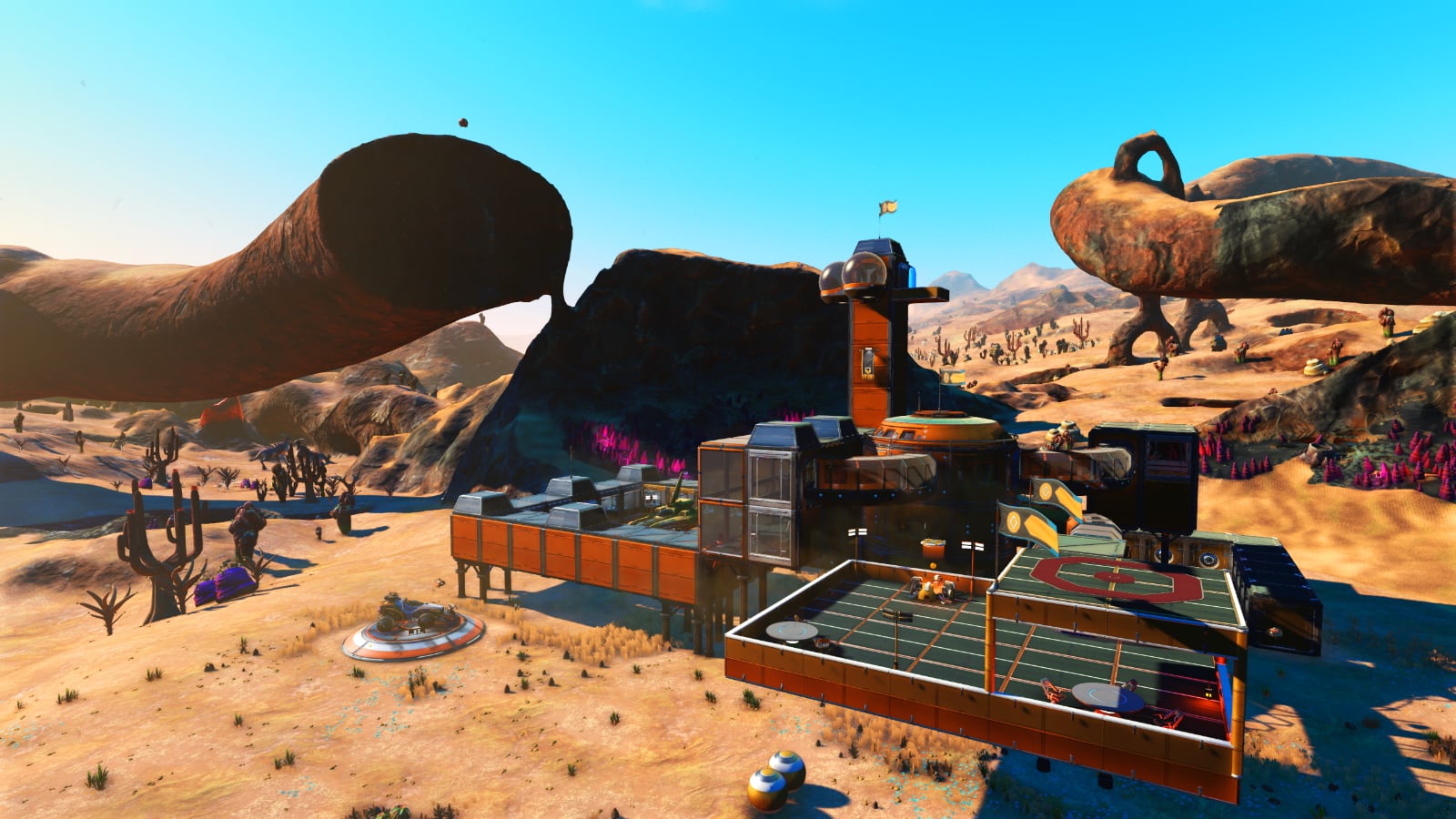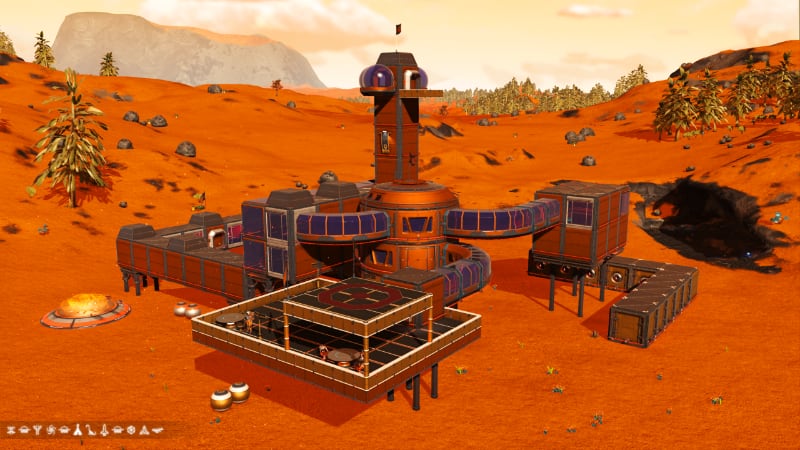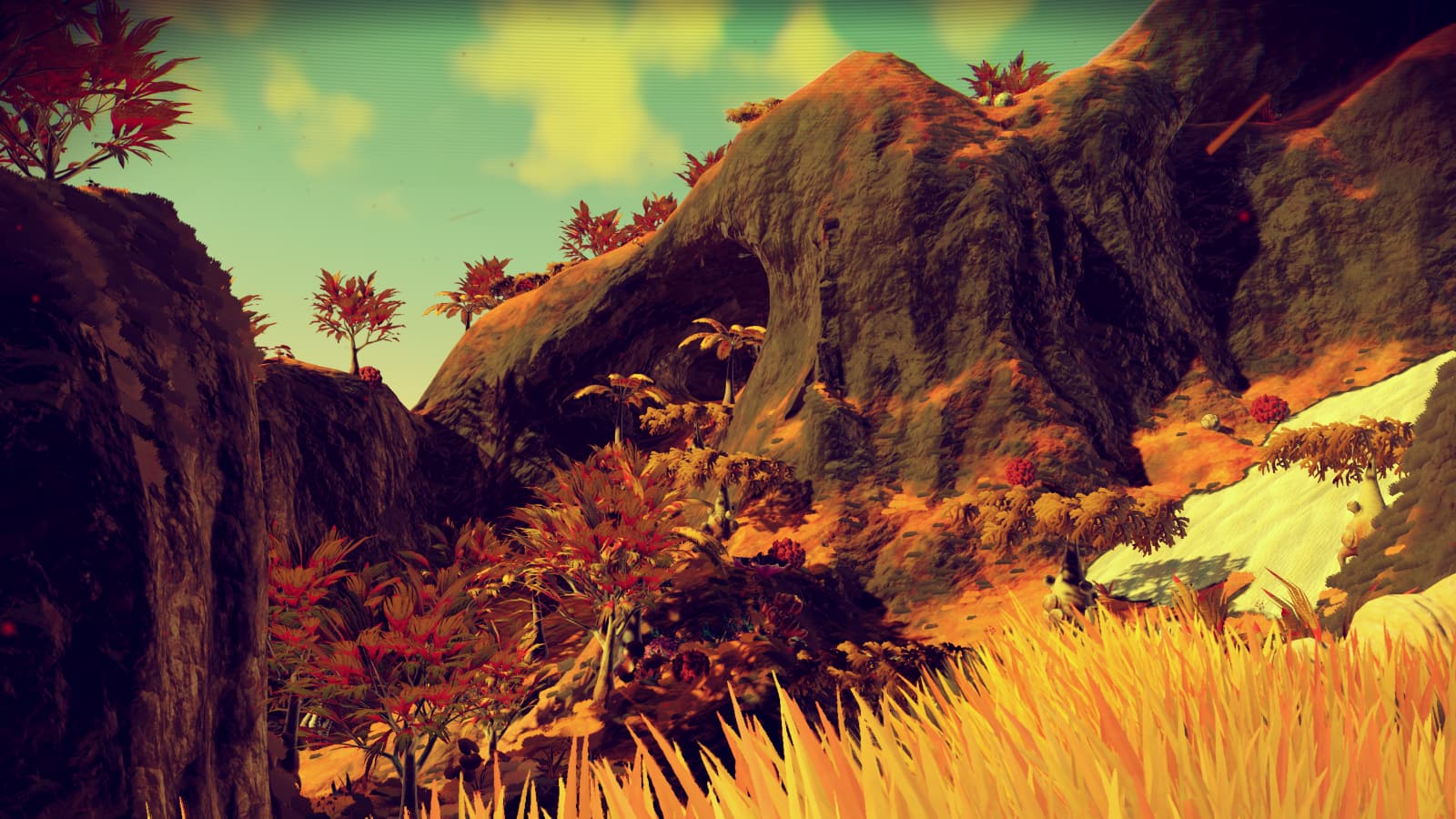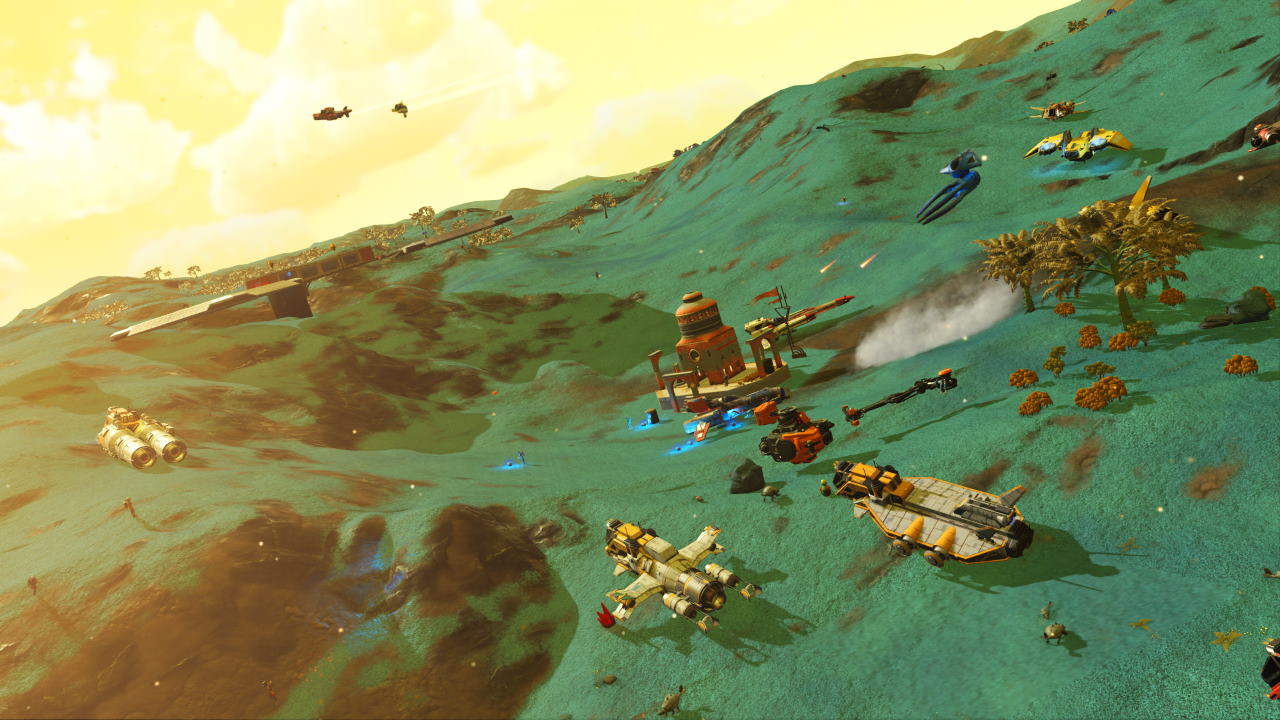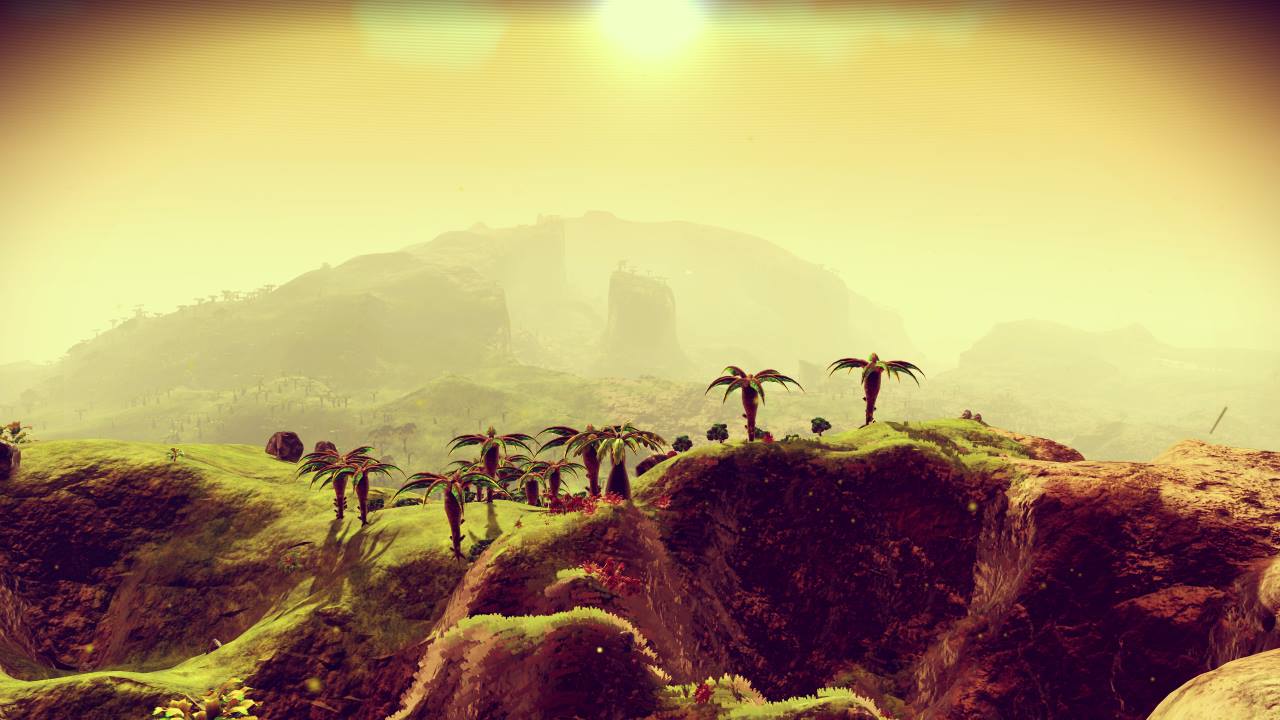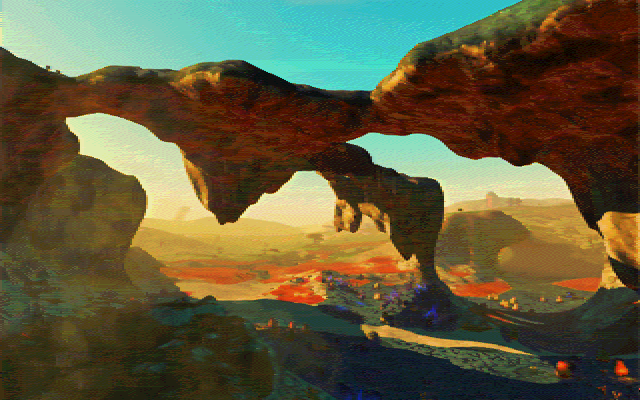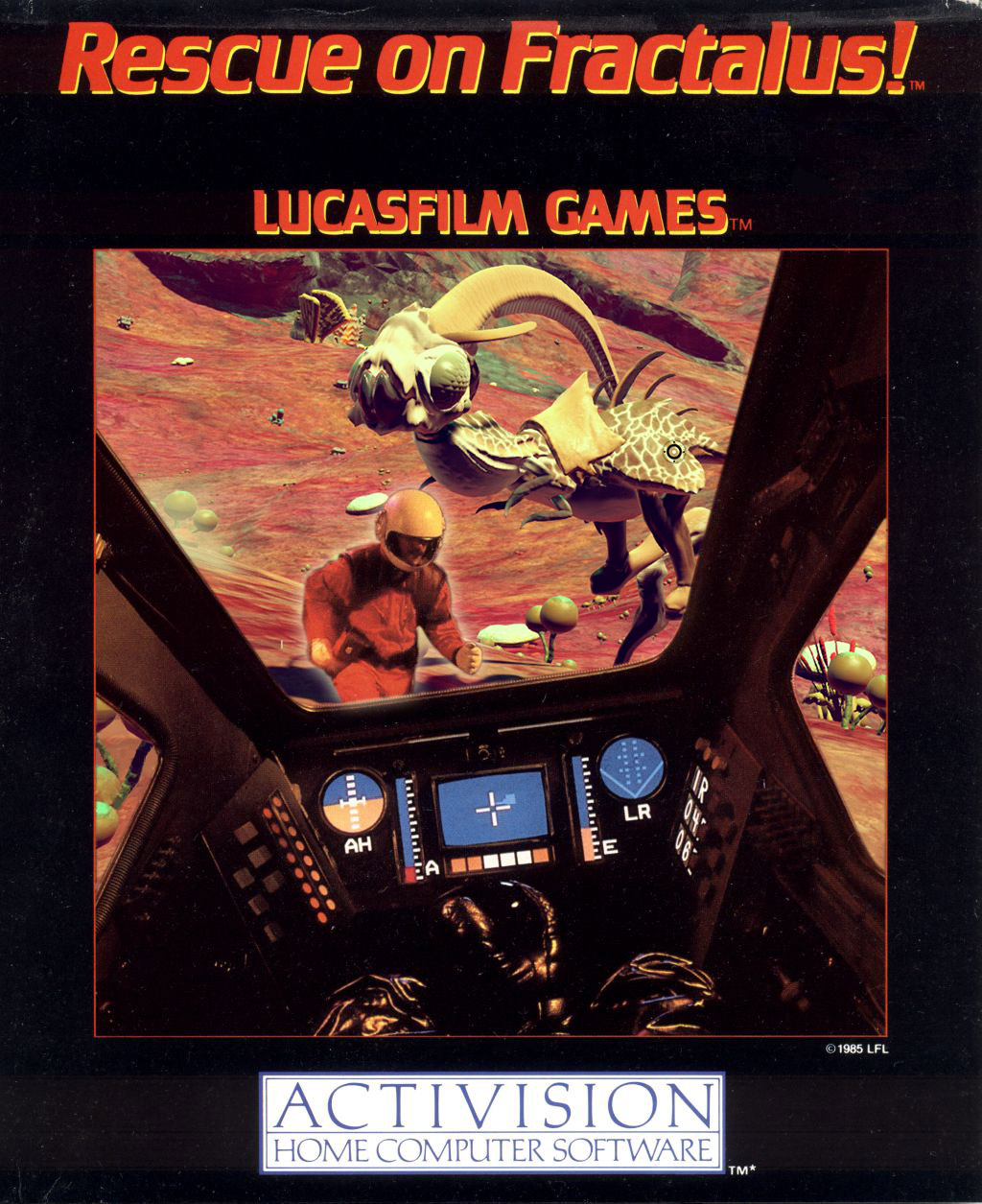A Tour of My “Sky Island Cottage” Base
During the summer leading up to the release of the Beyond update (No Man’s Sky 2.0) in August of 2019, I travelled to a small community hub known as Neo Wanderers (and later as The Masters Association). It is the third player community in the Euclid galaxy that I joined, after the Galactic Hub [ base photo ] and the Korvax Ascendancy [ base photo ]. What I didn’t realize before I set out was just how small a community it was — in fact, on my platform (PC), I was then and am now the only resident in the system.
No matter, however. After arriving at my destination, I explored the planets of the core system and, as I was flying over an orange and blue ocean world, I spotted a small pair of floating rock islands that struck me as the perfect place for a cozy little base. I touched down, wandered through the small patch of trees atop the main floating formation, and began construction of what has become perhaps my favorite of the bases I have created so far in the No Man’s Sky universe.
One of the hallmarks of the base is an extensive use of lighting — both inside and outside the cottage, on the ground, in the trees — extensive. Sadly, when Beyond arrived, the base went dark, and seeing its power and wiring requirements (which is a mechanic I’m glad Hello Games added, actually), I knew the aesthetic of the base would be destroyed if I were to wire it up. And, so, I left the base behind and moved on to other things.
Happily here, nine months later, the recent arrival of the Exo Mech update (No Man’s Sky 2.4) brought with it the Electrical Cloaking Unit that allows the wires that power various base components to be hidden! Noting that, I returned to my Sky Island Cottage, located and tapped into an Electromagnetic Power Hotspot, and went crazy crazy with the wires. And, a few hours later things were as good as new — better, in fact, with some tweaks and additions I’ve added along the way.
I made a walk-through video to have a record this base, in the event that the Beyond update reset the universe. (I didn’t see the wiring thing coming…) That video is shown here, along with a few photos, old and new. I hope you enjoy my build. If you’d like to visit, the base can be found in the Euclid galaxy on PC, in Normal play mode at coordinates 09DC:0082:0DDE:0079. Find a portal and stop in for a visit, why don’t you?

